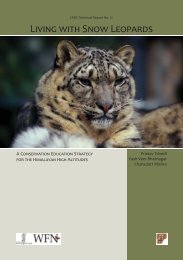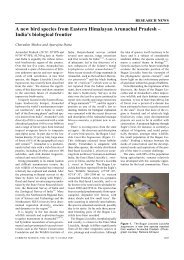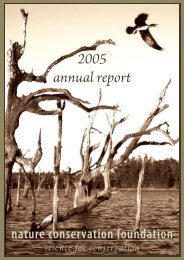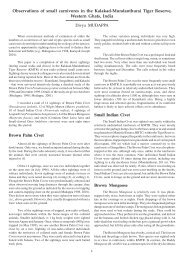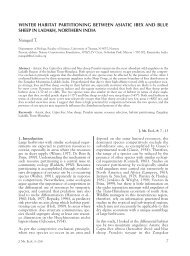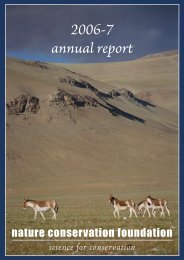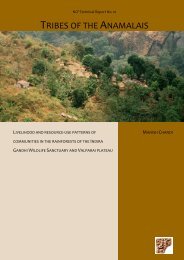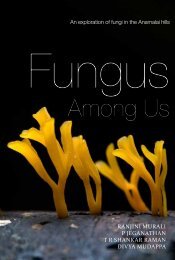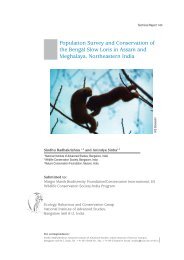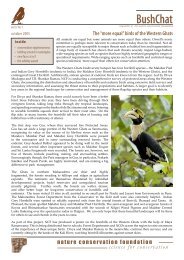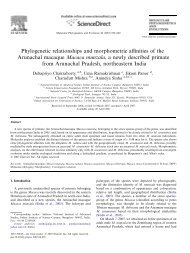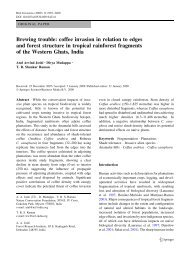towards project snow leopard - Nature Conservation Foundation
towards project snow leopard - Nature Conservation Foundation
towards project snow leopard - Nature Conservation Foundation
Create successful ePaper yourself
Turn your PDF publications into a flip-book with our unique Google optimized e-Paper software.
Towards Project Snow Leopard • 55<br />
STATE LEVEL CONSULTATION - SIKKIM<br />
18 th February 2005,<br />
Gangtok, Sikkim<br />
Views of the Forest Department Staff on Project Snow Leopard and its Planning<br />
Specific Target Areas in the State (Geographical scope of the <strong>project</strong> ):<br />
In general, areas > 4000 m would fall under the purview of the PSL. In the Trans-Himalayan<br />
region, these would include all areas within the proposed Cold Desert <strong>Conservation</strong> Reserve, such<br />
as Lhonak Valley, Lhashar Valley, Donkung - Tso Lhamo Plateau, Sebu La, Lava, Yume Samdong,<br />
Upper Thosa lake (source of Chakung Chu), and Nimphu. In the Greater Himalaya, this would<br />
include Kanchenzonga National Park, and areas such as Kishung La, Green Lake, Lampokhri,<br />
Bikhma taar, Talung Glacier, Dudh Pokhri, Khang La, East Sikkim, Lampokhri (Jelepla).<br />
1. Strengths of the Forest Department Staff in Effectively Managing Wildlife in the High Altitudes<br />
(> 4000 M) of Sikkim<br />
1.1. Large contiguous areas still relatively undisturbed<br />
1.1.1 All areas above 3500 m in the state is notified Reserve Forest with no rights or<br />
concessions.<br />
1.1.2 Potential for trans-boundary PAs: Contiguous with Quomolongma <strong>Nature</strong> Reserve<br />
(TAR), Kanchenjunga <strong>Conservation</strong> Area (Nepal), & Torsa <strong>Nature</strong> Reserve (Bhutan).<br />
1.1.3 Low human population and cattle density (the entire <strong>snow</strong> <strong>leopard</strong> range in the<br />
state may be shared by c. 10,000 people owning c. 5,000 livestock).<br />
1.1.4 Rapidly developing state resulting in people shifting to tertiary occupations and<br />
depending less on natural resources directly.<br />
1.2. Cultural values linked to conservation<br />
1.2.1 Mt. Khangchendzonga is the guardian deity for all the communities and there are<br />
various festivals, folklore related to conserving it. The whole landscape is dotted<br />
with holy caves, lakes, rivers, plants and sacred groves.<br />
1.3. Local community is conservation-oriented<br />
1.3.1. Most of the forest and wildlife offences are reported by concerned villagers.<br />
1.3.2. Community participation has been institutionalized with creation of 120 JFMC and<br />
44 EDC and decentralization of legal and financial powers.<br />
1.3.3. 13 Local CBOs, NGOs very active and strengthened around KBR.



